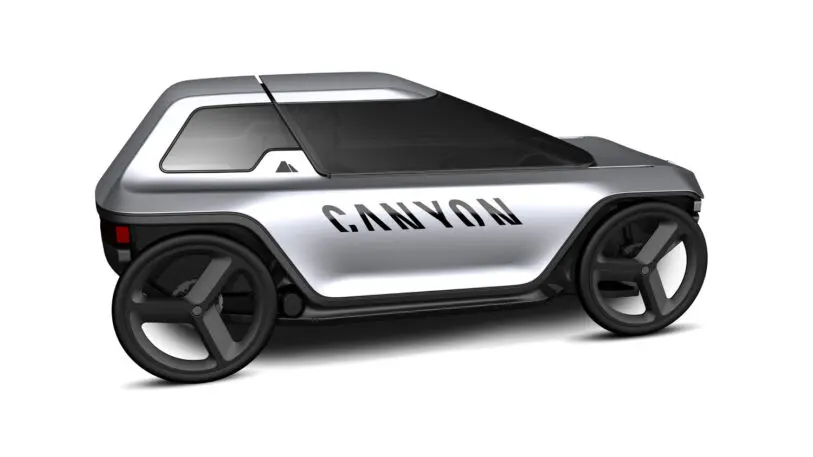Biking to your job is great until it rains and you show up soaked to work. Biking to the store is splendid until you spot a good deal on canned goods and try to lug too much stuff home. So many of us, in the U.S. especially, bite the bullet and buy a car for all those situations where a bike is a tricky fit.
But what if your bike was your car? According to the bike manufacturer Canyon, it’s an idea a lot less out there than you might think. Together with the Technical University of Aachen, Canyon has developed an intriguing concept for the future of mobility. It’s basically an electric car that you pedal.
On the outside, it looks like a small hatchback car—complete with four wheels and a big front windshield. But on the inside, it’s actually a recumbent bike, a bike that you sit in almost like a La-Z-Boy and pedal from a reclined position (which is known for being easier on your back, butt, and knees than a typical bike). When fitted with an electrical assist engine such as you see in modern e-bikes, the car helps the rider-driver pedal to speeds up to 37 mph, and it has nearly 100 miles of range between charging.


On the flip side, however, the promise of a dedicated bike lane is exactly that it’s dedicated to bikes, and riders inside don’t need to concern themselves with other vehicles that might be merging in or out. This snaking between car turf and bike turf might wreak havoc in both worlds. On streets, it’s a car that’s too slow, and in commuter lanes, it’s a bike that’s too fast. Indeed, e-bikes generally have a maximum legal speed of just 20 mph in the U.S. for the safety of everyone. To mitigate some of these issues, Canyon imagines its vehicle would actually have a street mode and a bike-lane mode, which would allow the driver/rider to swap speed limits accordingly, on their honor.
For now, the vehicle is just a concept, but Canyon is producing a physical prototype and hinting that it might release this bike-car, or something like it, one day. And while it certainly invites all sorts of skepticism (most of all, would someone really want to “drive” a car that’s that small on a real road?), its entire Fred Flintstone approach to greener mobility feels surprisingly future-forward.
Recognize your brand’s excellence by applying to this year’s Brands That Matter Awards before the final deadline, June 7.
Sign up for Brands That Matter notifications here.







